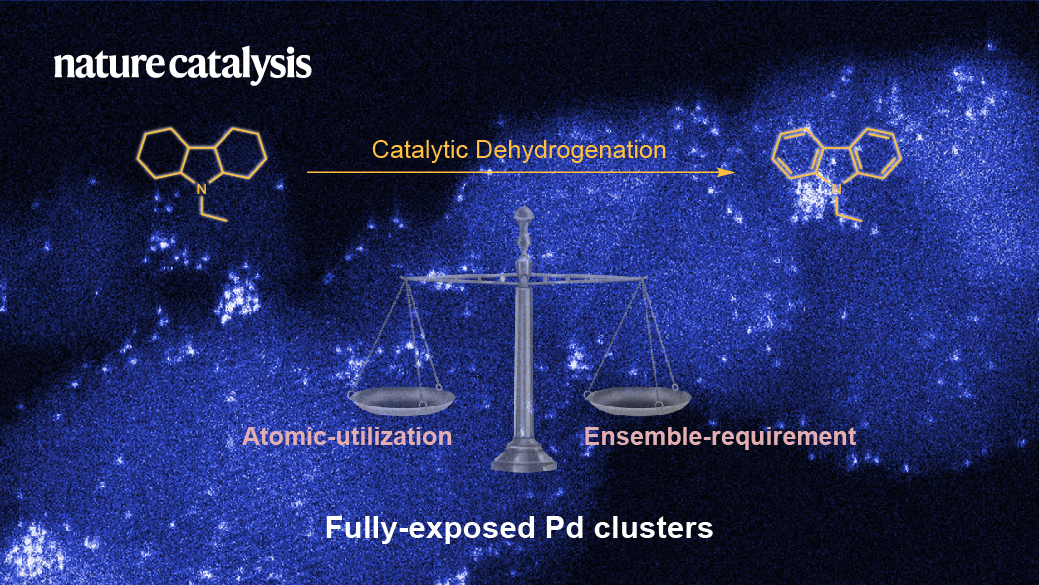Researchers collaborate to make progress in hydrogen production from nitrogen heterocycles
2022-04-25
The facile catalytic dehydrogenation of liquid organic hydrogen carrier (LOHC) at mild temperatures discharges high-purity hydrogen gas (H2). This holds great value for on-board proton exchange membrane fuel cell applications.
Associate Professor Yang-Gang Wang’s team from the Department of Chemistry at the Southern University of Science and Technology (SUSTech), in collaboration with Prof. Ding Ma’s team at Peking University, Prof. Wu Zhou at the University of Chinese Academy of Sciences (UCAS), and Dr. Hongyang Liu at the Shenyang National Laboratory for Materials Science (SYNL) have recently made great research progress in the field of dehydrogenation of organic hydrogen storage media.
Their research, entitled “Fully-exposed palladium cluster catalysts enable hydrogen production from nitrogen heterocycles,” was published online in Nature Catalysis.

In this study, the structure-sensitivity of supported Pd species ranging from nanoscale to atomic scale was investigated in the catalytic dehydrogenation of DNEC. With well-elucidated structure properties and site distributions of Pd species, the optimal Pd species were identified as the fully-exposed atomic-layered Pd clusters with the average coordination number at around 4.4, exhibiting higher atomic efficiency and intrinsic activity compared with larger Pd particles. Contrarily, the cationic Pd single-atoms exhibit the lowest activity, making them behave like spectators in the reaction.
DFT results show that without sufficient continuous Pd sites, the reactants cannot be activated effectively. In contrast, the strong bonding between products and metallic Pd crystalline surface makes the desorption process sluggish. With the combined higher metal dispersion, unique electronic properties, and suitable ensemble size, both the reactants’ activation and the products’ desorption are favorable over the fully-exposed atomic-layered Pd clusters, which combines the full metal utilization efficiency and optimal metal ensemble sites for the dehydrogenation reactions.
The study points out the significance of balancing the atomic dispersion and ensemble-requirement in the design of practical catalysts to achieve higher metal- and mass-normalized catalytic efficiencies simultaneously.
Chunyang Dong, Yinlong Li, Zirui Gao, and Mi Peng are the co-first authors of this paper. Associate Prof. Yang-Gang Wang from the Department of Chemistry at SUSTech, Dr. Hongyang Liu, Prof. Wu Zhou, and Prof. Ding Ma are the co-corresponding author.
This work was supported by the National Natural Science Foundation of China (NSFC) and the National Key R&D Program of China. The computational resource was supported by the Center for Computational Science and Engineering (CCSE) and the CHEM high-performance supercomputer cluster (CHEM-HPC) of the Department of Chemistry at SUSTech.
Paper link: https://www.nature.com/articles/s41929-022-00769-4




